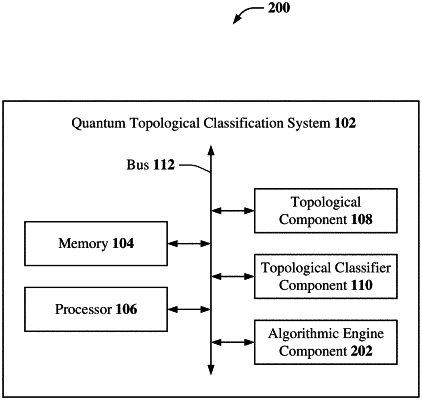| CPC G06N 20/00 (2019.01) [G06F 18/24155 (2023.01); G06F 18/29 (2023.01); G06N 10/00 (2019.01); G06N 10/60 (2022.01); G06V 10/764 (2022.01)] | 20 Claims |

|
1. A system, comprising:
a memory that stores computer executable components; and
a processor that executes the computer executable components stored in the memory, wherein the computer executable components comprise:
a topological component that employs one or more quantum computing operations to identify one or more persistent homology features of a topological simplicial structure; and
an algorithmic engine component that employs at least one of a variational quantum eigensolver algorithm or a hybrid Bayesian phase learning algorithm to determine at least one of a kernel of a graph Laplacian matrix or one or more Betti numbers corresponding to one or more quantum representations of the topological simplicial structure at a defined homological persistent scale; and
a topological classifier component that employs one or more machine learning models to classify the topological simplicial structure based on the one or more persistent homology features.
|